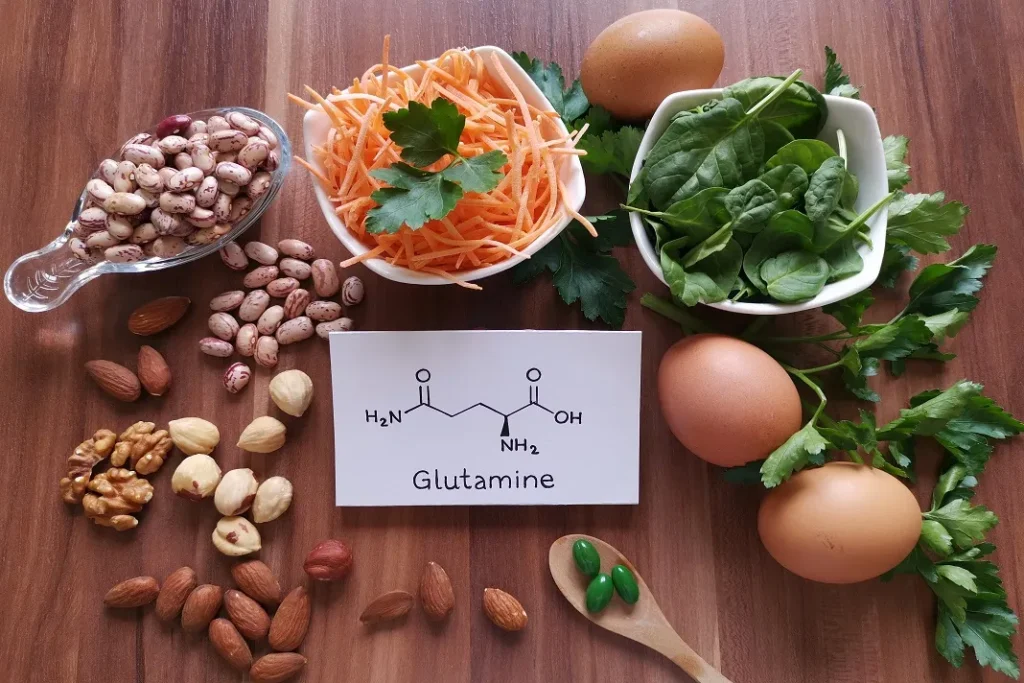There are two types of fatty acids – essential and nonessential. The difference between the two is that the body cannot produce essential fatty acids (EFAs), so they must be obtained through food. The body can produce nonessential fatty acids (NEFAs), so they are not as important for health. However, both types of fatty acids are important for overall health. This blog post will discuss the difference between EFAs and NEFAs and how to get the most out of both types of fatty acids.
What are Essential Acids?
Essential fatty acids (EFAs) are a type of fat that the body cannot produce. As a result, EFAs must be obtained through food sources. The two most important EFAs are omega-3 and omega-6 fatty acids. These fatty acids are necessary for maintaining health, but they must be consumed in the proper ratio. Too much of one fatty acid can lead to health problems. For example, an excess of omega-6 fatty acids has been linked to inflammation and other chronic diseases.

On the other hand, omega-3 fatty acids have anti-inflammatory properties and are necessary for brain health. The ideal ratio of omega-3 to omega-6 is 1:1. However, the average American diet contains a ratio of 15:1 in favour of omega-6 fatty acids. This imbalance is one of the reasons why chronic diseases are so prevalent in the Western world.
To get the most out of essential fatty acids, it is important to consume them naturally. This means eating fatty fish like salmon, herring, and mackerel or taking a high-quality fish oil supplement. It is also important to consume foods rich in omega-3 fatty acids, such as flaxseeds, chia seeds, and walnuts. These plant-based sources of omega-3 fatty acids are not as potent as fish oil, but they can still help achieve a healthy ratio of omega-3 to omega-6.
What are Nonessential Acids?
Nonessential fatty acids (NEFAs) are a type of fat that the body can produce. However, this does not mean that NEFAs are not important for health. NEFAs play various roles in the body, including cell growth, energy production, and hormone regulation. The two most important NEFAs are saturated fat and unsaturated fat. Saturated fat is found in animal products, such as meat and dairy. It is also found in coconut oil and palm oil. Saturated fat is not essential for health, but it can benefit small amounts. For example, saturated fat is necessary to absorb certain vitamins and minerals. It is also a source of energy and helps to promote satiety (feeling of fullness).
Unsaturated fat is found in plant-based oils, such as olive oil and avocado oil. Unlike saturated fat, unsaturated fat is essential for health. This type of fat is necessary for absorbing fat-soluble vitamins, such as vitamins A, D, E, and K. It is also important for maintaining cell membranes and preventing chronic diseases. The best way to get unsaturated fat is to consume plant-based oils in their natural form. This means using olive oil or avocado oil in cooking or salads. It is also important to consume nuts and seeds, as they are a good source of unsaturated fat.

Both essential and nonessential fatty acids are important for health. However, it is important to consume them in the proper ratio. Too much of one type of fatty acid can lead to health problems. For example, an imbalance of omega-3 and omega-6 fatty acids has been linked to inflammation and other chronic diseases. To get the most out of essential fatty acids, it is important to consume them naturally. This means eating fatty fish like salmon, herring, and mackerel or taking a high-quality fish oil supplement. It is also important to consume plant-based sources of omega-3 fatty acids, such as flaxseeds, chia seeds, and walnuts. Nonessential fatty acids are also important for health. However, they can be consumed in saturated fat or unsaturated fat. Saturated fat is found in animal products, such as meat and dairy. It is also found in coconut oil and palm oil. Unsaturated fat is found in plant-based oils, such as olive oil and avocado oil. The best way to get unsaturated fat is to consume plant-based oils in their natural form. This means using olive oil or avocado oil in cooking or salads. Nuts and seeds are also good sources of unsaturated fat.
What is Common in Essential & Non-Essential Fatty Acids?
Both have long hydrocarbon chains with a terminal carboxylic group at the end.
Triglycerides are also formed via the action of these enzymes. In addition, they each play a part in the formation of triglycerides.
What is the Difference Between Essential & Non-Essential Fatty Acids?
There are two main types of fatty acids: essential and nonessential. Essential fatty acids (EFAs) are necessary for human health, but the body cannot produce them. Nonessential fatty acids (NEFAs) are not essential for human health, but the body can produce them.
Both essential and nonessential fatty acids are important for the body. They are a source of energy and help to maintain cell membranes. Fatty acids also play a role in producing hormones and in the absorption of fat-soluble vitamins.
There are several differences between essential and nonessential fatty acids, but the most important distinction is that EFAs must be obtained from the diet while the body can produce NEFAs.
Another difference between EFAs and NEFAs is that EFAs are polyunsaturated fatty acids (PUFAs), while NEFAs can be either saturated or unsaturated. PUFAs are essential for human health, but they are also more susceptible to oxidation and rancidity than saturated fats.
The most important essential fatty acids are linoleic acid (LA) and alpha-linolenic acid (ALA). LA is an omega-6 fatty acid, while ALA is an omega-3 fatty acid. These two EFAs must be obtained from the diet because the body cannot produce them.
Good sources of LA include vegetable oils, such as soybean oil, corn oil, and sunflower oil. Good sources of ALA include flaxseed oil, canola oil, and green leafy vegetables.
What are Food Sources for Essential Fatty Acids?
Good sources of essential fatty acids include vegetable oils, such as soybean oil, corn oil, and sunflower oil. Good sources of alpha-linolenic acid include flaxseed oil, canola oil, and green leafy vegetables.

What are Animal Sources of Omega-3?
Animal sources of omega-3 fatty acids include fish, such as salmon, tuna, and halibut, and shellfish, such as oysters and shrimp. Animal sources also include grass-fed beef, liver, and eggs. Supplements are another source of omega-3 fatty acids. The most common supplements are fish oil capsules, which contain both EPA and DHA.
Also Read: 5 Key Benefits of Black Seed Oil on Health



